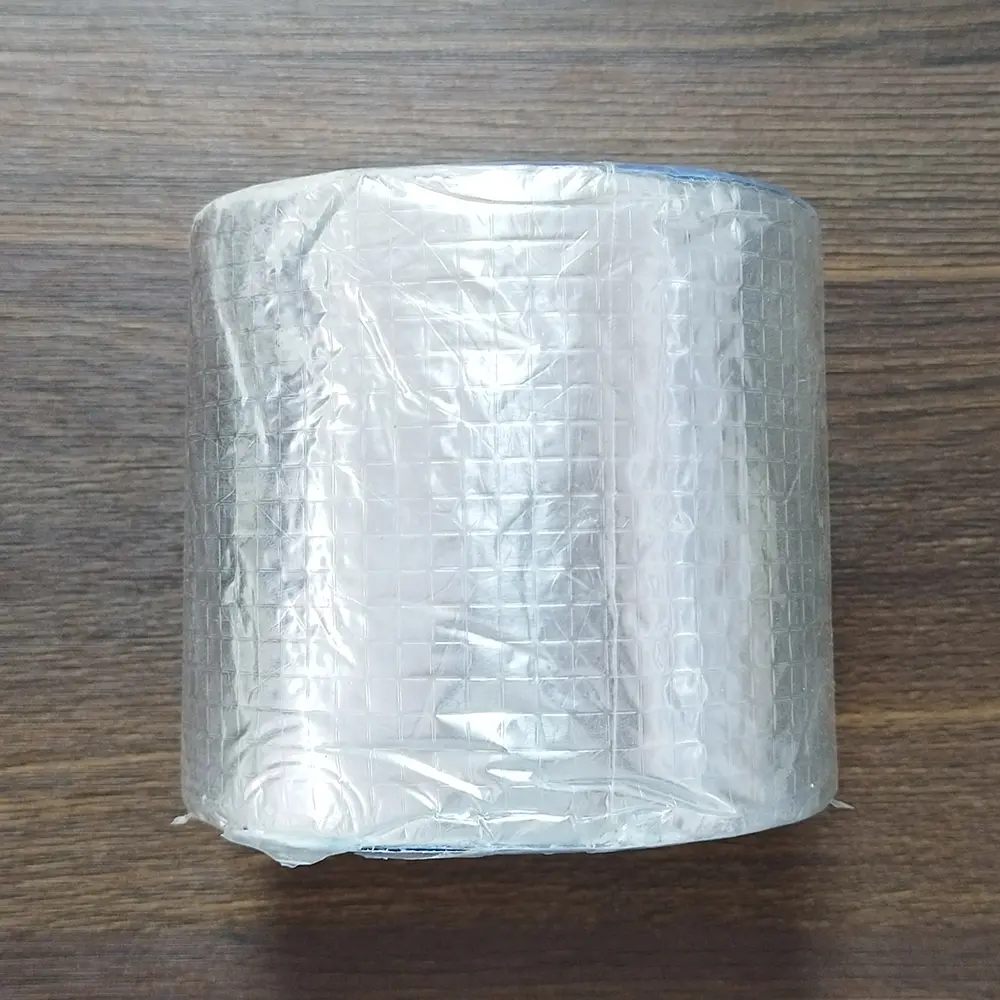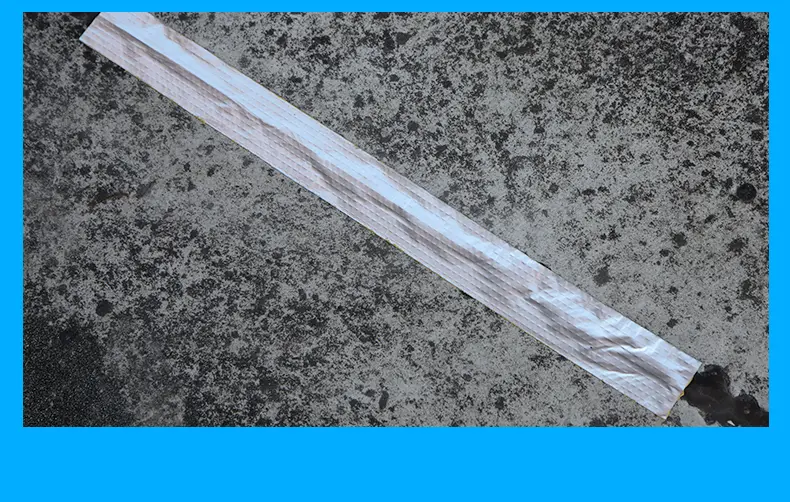Are you looking for a reliable waterproof solution for sealing, repairing, and protecting various surfaces? This comprehensive guide delves into the world of butyl tape, a versatile adhesive tape known for its exceptional waterproof properties. Whether you’re a construction professional, a DIY enthusiast, or someone looking to understand the types of butyl tape available, this article is a must-read. We’ll explore its uses of butyl tape, properties of butyl, and how it can benefit your projects. Read on to discover why butyl tape might be the perfect waterproof solution for your needs, especially when it comes to your roof.

What is Butyl Tape, and Why is It Such a Great Seal?
Butyl tape is a rubber-based adhesive tape, often used as a sealing tape. It is a synthetic rubber compound known for its excellent waterproof and adhesive properties. Unlike many other sealing tape options, butyl tape remains flexible and maintains its seal even under extreme temperature changes, making it ideal for various applications. This seal is crucial in many construction projects. The properties of butyl make it suitable for a variety of applications, from automotive to construction.
Butyl tape is a versatile adhesive tape that offers a durable and long-lasting seal. This seal is essential to protect against moisture and air leaks, ensuring the integrity of the materials it bonds. The properties of butyl allow it to withstand various environmental conditions, making it a reliable choice for both indoor and outdoor applications. It’s often the go-to for construction projects because of its ease of use butyl tape and dependability. Butyl tape is a waterproof seal.
Butyl tape offers many advantages over traditional rubber and traditional rubber adhesives. It’s designed to withstand extreme temperatures, making it an excellent choice for applications that experience significant temperature fluctuations. This tape ensures a durable and lasting seal. The unique composition of butyl rubber allows it to maintain its flexibility and adhesive strength even in harsh conditions. If you’re looking for a reliable waterproof seal, butyl tape is a top contender.
What Are the Different Types of Butyl Tape Available?
The term "type of butyl tape" refers to the variations in composition and design, which are tailored to specific applications. One of the most common is aluminum foil butyl tape, which combines the waterproof capabilities of butyl tape with an aluminum foil backing for enhanced durability and reflectivity. This type of butyl tape is often used in roofing applications.
Another type of butyl tape is the butyl sealant tape, which is designed to fill gaps and create a tight seal. It is great for repairing leaks, sealing joints, and preventing moisture ingress in various construction projects. The tape comes in different forms, including rolls and strips. Selecting the appropriate type of butyl tape for your project ensures the best possible performance and longevity. There are different types of butyl designed for specific purposes.
- Aluminum Foil Butyl Tape: This tape is also a popular choice for roof repairs and sealing, as the aluminum foil backing offers additional protection against UV rays and weather elements.
- Self-Adhesive Butyl Tape: Offers easy installation and strong adhesion, suitable for many applications where a permanent waterproof seal is required.
- Double-Sided Butyl Tape: This tape is often used for bonding two surfaces, offering a strong adhesive bond and waterproof seal.
Choosing the right type of butyl tape depends on the specific needs of your project.
What Are the Uses of Butyl Tape in Construction Projects?
Butyl tape is a versatile material with diverse applications in construction projects. It is used for sealing tape and creating waterproof barriers. For roofing applications, it is crucial for sealing around vents, chimneys, and skylights. It’s a crucial product when you need to seal joints and seams effectively.
Butyl tape is often used in HVAC systems to seal ducts and prevent air leaks, improving energy efficiency. In addition, it’s used in construction projects for sealing joints and seams, preventing water damage and protecting against the elements. Furthermore, it’s an excellent choice for deck joist repairs, ensuring a waterproof seal that extends the life of the decking. Butyl tape is often used for bonding roofing and building materials together.
Butyl tape‘s versatility extends to various other applications, including:
- Sealing windows and doors
- Repairing roof leaks
- Creating waterproof seal around plumbing fixtures
- Insulating pipes
How Does Butyl Tape Compare to Other Waterproofing Sealants?
Compared to other waterproof sealing tape, butyl tape has many advantages. Unlike silicone sealants, butyl tape offers excellent adhesive properties and can create a durable waterproof seal without the need for extensive surface preparation. Also, unlike many other adhesive tape, butyl tape remains flexible and resists cracking or shrinking over time, ensuring a long-lasting seal.
Compared to traditional rubber sealants, butyl tape is easier to apply and provides a more consistent seal. Many adhesive tape and sealants can’t withstand extreme temperature changes, but butyl tape is designed to. While some sealants may require curing time, butyl tape offers instant adhesion and waterproof protection. While other products may be better for construction, butyl tape is the go-to for many jobs.
Butyl tape is also great for construction projects and HVAC. The tape provides a reliable, long-term waterproof seal.

How to Properly Install Butyl Tape for the Best Waterproof Seal
Proper installation is crucial to ensure that butyl tape provides an effective seal. First, the surfaces should be cleaned to remove any dust, dirt, or debris. This step is essential for the tape adheres well. Make sure the surfaces are dry to ensure optimal adhesive performance.
Next, apply the tape firmly, pressing it down to ensure it fully contacts the surface. For the best results, use a roller to apply even pressure, especially on uneven surfaces. When applying the tape, overlap the edges for added security. Make sure that the tape ensures a tight seal.
- Surface Preparation: Clean and dry the surface thoroughly.
- Application: Apply the tape firmly, ensuring full contact.
- Pressure: Use a roller to apply even pressure.
- Overlap: Overlap the edges for extra protection.
- Ensure: Ensure that the tape provides a waterproof seal.
What are the Benefits of Using Butyl Tape?
Butyl tape is a versatile material for various construction projects. It is used for a variety of purposes, including sealing joints and repairing leaks. Some of the benefits of butyl include:
- Waterproof and airtight seal: Butyl tape provides a reliable waterproof seal, protecting surfaces from water damage and leaks. It is often used in roof repairs and other outdoor applications.
- Excellent adhesive properties: The tape adheres** well to various surfaces, including metal, wood, and plastic.
- Durable and long-lasting: Butyl tape remains flexible and resists cracking, ensuring a long-lasting seal. The tape can last** for many years.
- Resistance to extreme temperature: Butyl tape can withstand extreme temperatures and weather conditions, making it ideal for outdoor applications.
- Easy to install: The tape is easy to apply, making it a convenient choice for DIY projects and professional construction projects. Butyl tape is a rubber-based adhesive** that is easy to install.
Can Butyl Tape Be Used for Roof Repairs?
Yes, butyl tape is a popular choice for roof repairs because of its exceptional waterproof properties and adhesive strength. The tape is great for repairing leaks around vents, chimneys, and skylights. Butyl tape is essential for a waterproof seal.
Butyl tape can be used for:
- Sealing around flashing
- Repairing small tears or holes
- Creating a waterproof seal around penetrations
- Bonding roofing and building materials together
Before using butyl tape for roof repairs, ensure the surfaces are clean and dry. Choose the right type of butyl tape for the specific repair. Butyl tape may be the answer to your roof repair needs.
How to Remove Butyl Tape if Needed
While butyl tape is designed for a long-lasting seal, there may be instances where removal is necessary. The process can be simplified with the right approach and tools. Butyl tape can be difficult to remove. One way to remove butyl tape is to heat the tape with a heat gun or a hairdryer. This softens the adhesive and makes it easier to peel off.
Use a plastic scraper or a putty knife to gently lift the edges of the tape. Use a solvent, such as mineral spirits or citrus-based cleaner, to help dissolve the adhesive. When you remove butyl tape, always work slowly to prevent damaging the surface. If you need to remove butyl tape, you should be aware that the tape can be difficult to remove.
What Other Applications Can Butyl Tape Be Used For?
Beyond roofing and construction projects, butyl tape offers a wide range of applications. It can be used in automotive for sealing around windows, doors, and body panels. In HVAC systems, it is used to seal ducts and prevent air leaks. In construction projects, butyl tape can be used to seal windows and doors.
Other uses include:
- RV repairs: Butyl tape is a popular choice for repairing leaks and sealing seams in RVs.
- Marine applications: Butyl tape is tape is also used to seal joints and prevent leaks in boats and other marine vessels.
- DIY projects: Butyl tape can be used for various home repairs and crafts.
Butyl tape is a versatile adhesive tape that offers many solutions.
Where Can You Find Butyl Tape?
Butyl tape is widely available from various sources, making it easy to find the right product for your needs. You can find butyl tape at most hardware stores, home improvement centers, and online retailers. Many tape manufacturers also sell butyl tape directly to consumers and businesses.
When purchasing butyl tape, consider the type of butyl tape, the width and length of the roll, and the application. You can buy butyl tape from tape manufacturer sites. Make sure to read reviews to ensure that you choose a high-quality product. Make butyl tape a part of your projects.
In Conclusion:
Butyl tape is a reliable and versatile waterproof adhesive solution for various applications. Its excellent adhesive properties, durability, and resistance to extreme temperature changes make it an ideal choice for roof repairs, construction projects, and DIY tasks. By understanding the types of butyl tape, how to use butyl tape, and its benefits, you can harness the power of butyl tape to create lasting waterproof seals and protect your projects. From roofing to HVAC systems, this tape ensures a waterproof seal.
Here’s a summary of the key takeaways:
- Butyl tape is a versatile and waterproof adhesive tape.
- There are several types of butyl tape, each suited for different uses.
- Proper installation is critical to ensure an effective seal.
- Butyl tape offers several benefits, including its durability and resistance to extreme temperature.
- Butyl tape can be used for roof repairs, construction projects, and various other applications.
- Butyl tape is widely available from several sources.
If you’re looking for high-quality polyester yarn or other textile products, explore the offerings from Jinyuent.com. Check out our selection of high-quality, durable, and versatile measuring ropes, ideal for various construction projects and other tasks.





